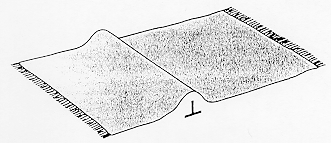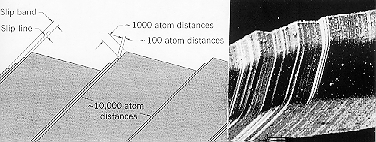| |
Dislocations
and Slip
Dislocations are one-dimensional defects that occur in real
crystalline solids and control their plastic deformation. The presence of
dislocations permits atomic planes to slip "one atomic row at a time."
Dislocations interact with the microstructure of the material and these
interactions are responsible for their yield, work-hardening, ductility, and
other plastic properties. Dislocation motion in a crystal is analogous to
moving a rug over a floor by introducing a ruck on one edge. Pushing the ruck
to the other edge moves the carpet by the width of the ruck. This process
may be repeated many times to achieve the desired shear displacement between
the rug and the floor with less work than sliding the carpet in one go.
For
a crystal, the size of the "ruck" is the distance between
the atom planes, about 0.4 nm. The macroscopic shear is produced by the motion
of many dislocations newly created by the applied stress. This process
will tend to occur on planes for which the resolved shear stress is the largest.
The right hand diagram and photograph illustrate this for a Zinc single
crystal |



